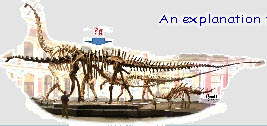


Q. Wouldn't expansion by accretion, as outlined in your book, release a lot of energy that would warm the earth’s interior to an unacceptable level?
A. This argument is certainly a very widely and routinely used objection against the cosmic accretion proposal. The Wikipedia entry on the Expanding Earth denies cosmic accretion because “… any accretion releases a lot of energy, which would warm the planet's interior.” [1] Geologists who argue against cosmic accretion proposals also voice similar opinions: “such expansion by accretion would release a lot of energy that would warm the earth’s interior much more than it actually is” [2] or “Life would be interesting ... if meteor showers were more common that rain storms!” [3] or “The effect would be gross and obvious” [4]
A few moments thoughtful contemplation will illustrate that these objections are clearly wrong. The essential point to note is that cosmic accretion would be dwarfed by normal rainfall - not the other way around.
Cosmic accretion, or more specifically the theory of Ongoing Cosmic Accretion as outlined in my book, proposes that a fine layer of cosmic dust[5] gradually covers the planet slowly increasing its mass. We can imagine intermittent waves of this fine cosmic dust entering the atmosphere from outer space and then gradually drifting down through the lower atmosphere, until it finally floats down to cover the ground.
The rate of cosmic dust required to form an Expanding Earth is very low. Based on the geological evidence for Earth expansion it can be calculated to amount to an average thickness of less than 0.1 mm per day. Average rainfall in the UK is over 1,000 mm per year and this vastly dwarfs the amount of cosmic dust.
We would hardly notice any heating due to such a slight addition of fine dust. It's such a small amount that an overnight shower of light rain would easily wash the fine layer of cosmic dust away. There clearly wouldn’t be anywhere near enough energy to warm the Earth’s interior from such a relatively low accretion of dust.
I've conducted a very simple experiment that very clearly demonstrates just how small the required cosmic accretion is in practice and a video of this is shown below. [6]
A few moments thoughtful contemplation will illustrate that these objections are clearly wrong. The essential point to note is that cosmic accretion would be dwarfed by normal rainfall - not the other way around.
Cosmic accretion, or more specifically the theory of Ongoing Cosmic Accretion as outlined in my book, proposes that a fine layer of cosmic dust[5] gradually covers the planet slowly increasing its mass. We can imagine intermittent waves of this fine cosmic dust entering the atmosphere from outer space and then gradually drifting down through the lower atmosphere, until it finally floats down to cover the ground.
The rate of cosmic dust required to form an Expanding Earth is very low. Based on the geological evidence for Earth expansion it can be calculated to amount to an average thickness of less than 0.1 mm per day. Average rainfall in the UK is over 1,000 mm per year and this vastly dwarfs the amount of cosmic dust.
We would hardly notice any heating due to such a slight addition of fine dust. It's such a small amount that an overnight shower of light rain would easily wash the fine layer of cosmic dust away. There clearly wouldn’t be anywhere near enough energy to warm the Earth’s interior from such a relatively low accretion of dust.
I've conducted a very simple experiment that very clearly demonstrates just how small the required cosmic accretion is in practice and a video of this is shown below. [6]
Further Reading
- Screenshot and link to Wikipedia entry for Expanding Earth here and here
- Screenshots and link to Donald R. Prothero’s opinion here and here
- Screenshots and link to Timothy Casey - Consulting Geologist here and here
- Screenshots and link to Andrew Alden - Geology Guide here and here
- Link to Cosmic Dust on Wikipedia here
- Link to YouTube video showing a simple experiment to demonstrate the effects of cosmic accretion here
Comment on this page here
Updated 13 May 2024
“Cosmic accretion is dwarfed by normal rainfall”
“A layer of cosmic dust less than
0.1 mm thick per day would cause the calculated Earth expansion”
0.1 mm thick per day would cause the calculated Earth expansion”
“A simple experiment shows that layers of cosmic dust could easily form an Expanding Earth”
Share this page
Turn on Sound or Subtitles




